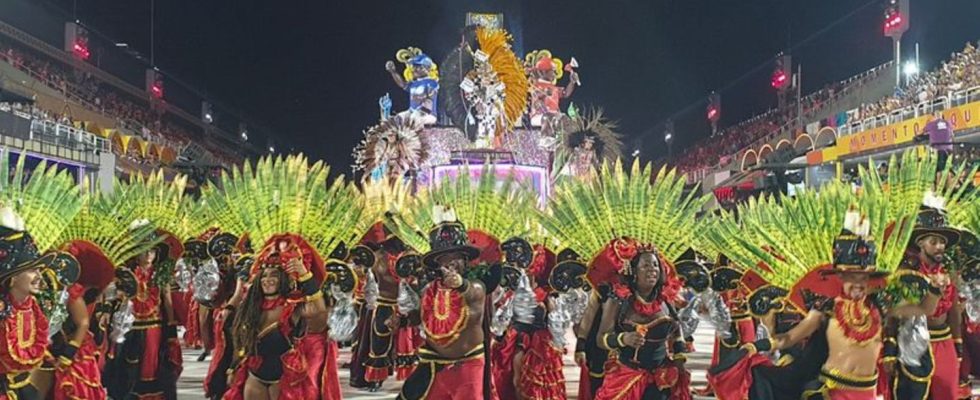regional customs
Spectacle at Sugarloaf Mountain: Carnival parades in the Sambodrome in Rio
The Rio Carnival is the largest party in the world, with the city administration expecting a total of seven million people in the city. photo
© Philipp Znidar/dpa
Samba rhythms and colorful costumes conquer the Sambodrome in Rio de Janeiro: The Sugarloaf Carnival is entering its second round. The spectacle had already set a record in advance.
Hot rhythms, thousands of costumes and loud samba sounds: after the start of the world-famous parades in the Sambodrome in In Rio de Janeiro, the samba schools of the advanced classes should also perform on the second day. The “Sereno de Campo Grande” school began in the evening and paid homage to Saint Barbara and Oya. One is considered the patron saint against lightning and thunder in Christian faith, the other is considered the goddess of lightning and storms in Afro-Brazilian religions.
Another seven samba schools, which had qualified for the promotion class of the parade, were supposed to perform until the early hours of the morning and take the spectators into another world with their magnificent floats. The carnival also thrilled the crowds in other Brazilian cities such as Recife, Salvador and São Paulo.
Rio’s mayor Eduardo Paes officially ushered in the colorful hustle and bustle at Sugarloaf on Friday by handing over the city keys to “King Momo”, the symbolic figure of the carnival. This process was even recorded in a decree published in a special edition of the Official Gazette.
Tens of thousands on site and millions in front of the television
The top twelve schools will perform today and Monday. The winning school in the promotion classes from the first two days will get a starting place as the top school for next year. Tens of thousands in the stands and millions watching television in Brazil and around the world usually watch parades on the oversized catwalk designed by famed Brazilian architect Oscar Niemeyer in 1984. This year Tribünenstrasse is celebrating its 40th anniversary.
The Rio Carnival is the largest party in the world, with the city administration expecting a total of seven million people in the city. It is estimated that the carnival will generate an economic turnover of five billion reais (about 934 million euros) – with services directly or indirectly linked to the celebrations. Hotels would operate at 85 percent occupancy during the festive season, it said. Since last weekend, the “Cariocas”, as the residents of Rio are called, and tourists have been getting in the mood for the carnival with musicians and dancers in the streets of various parts of the city. It’s currently midsummer in the southern hemisphere – the thermometer at Sugarloaf Mountain showed over 30 degrees on Saturday.
“Show the best the city has to offer”
At the street carnival in the coming days, dozens of carnival groups – the so-called blocos – will parade through the streets of the districts to create atmosphere. The “Blocos” have always formed something of a parallel carnival to the strictly regulated parades in the Sambodrome, in which a jury awards marks like figure skating. The city administration approved 453 moves this season. “Rio de Janeiro uses Carnival to show the world the best that the city has to offer,” said Ronnie Costa, president of the Riotur tourism agency, which is responsible for organizing the carnival.
According to the city administration, this year’s carnival is the largest carnival investment in the history of the state with 62.5 million reais (around 11.6 million euros). The carnival artists spent a total of 960 hours preparing over the course of the year. Planning begins more than four months in advance “to ensure the festival is brilliant,” Costa said.

